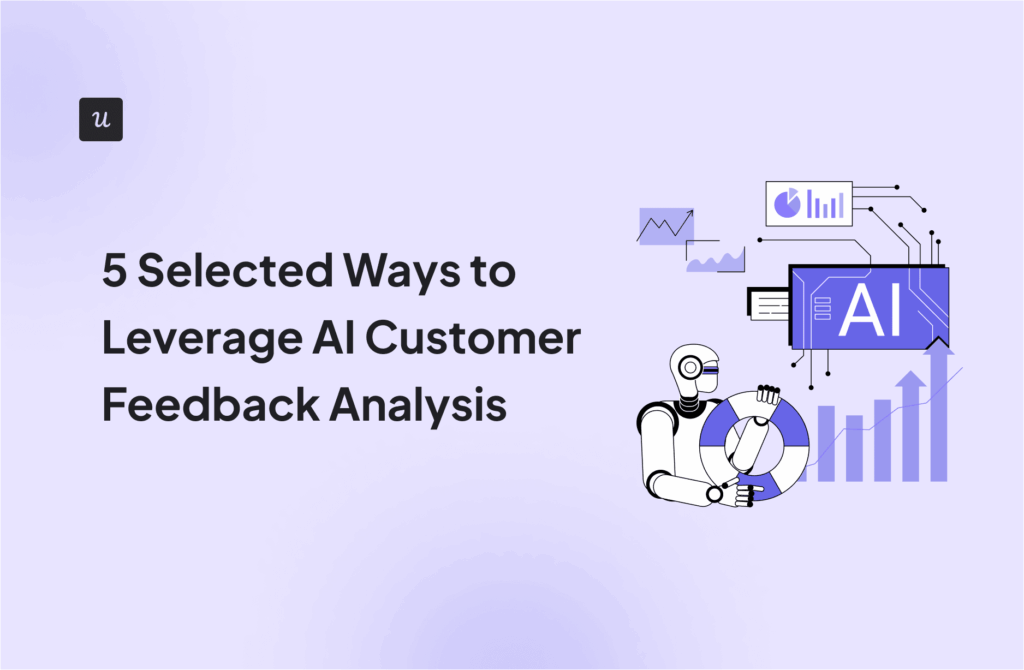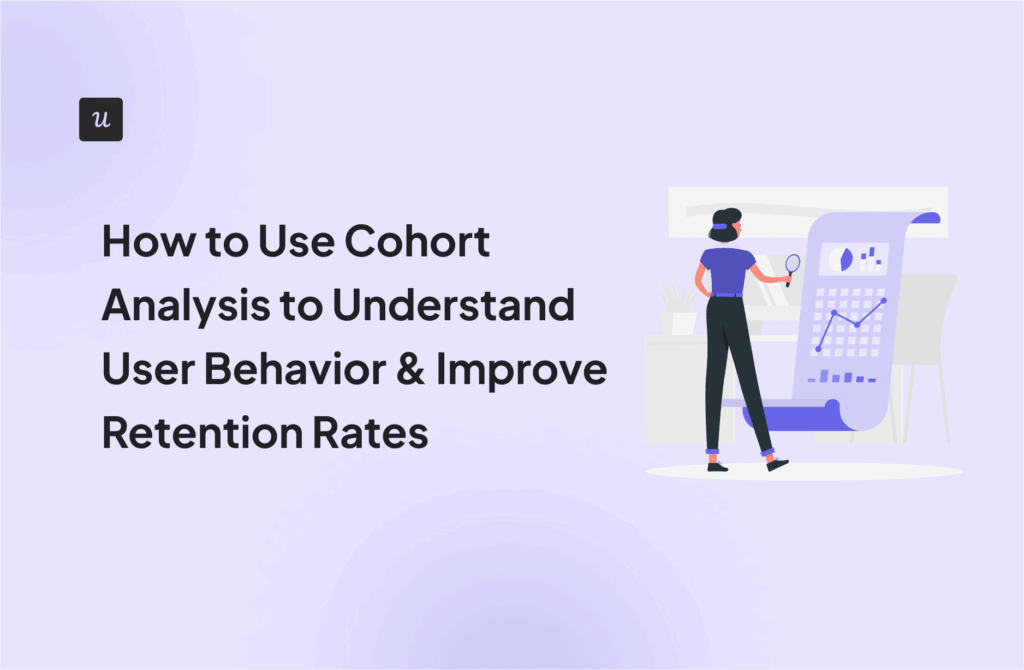
Interested in customer segmentation analytics but don’t know where to start?
In the article, you will learn how to do it, step-by-step.
We also cover:
- The benefits of customer segmentation analysis.
- Examples from different industries.
- Best segmentation and analytics tools.
Let’s get started!
Try Userpilot Now
See Why 1,000+ Teams Choose Userpilot

What is customer segmentation?
Customer segmentation is the process of grouping customers based on shared characteristics. For example, companies often segment customers using demographic data like age, location, or behavior patterns.
How is it different from market segmentation? It focuses on existing customers, not prospective ones.
The purpose?
To better understand customer behavior, needs, and preferences. And personalize the customer experience to better accommodate them.
Is Your Customer Segmentation Analytics Strategy Scalable?
Basic demographics aren’t enough. To truly drive growth, you need behavioral insights. Take this quick check to see if your customer segmentation analytics to improve customer engagement are up to par.
How do you currently group your customers for analysis?
When you identify a “Power User” segment, how do you engage them?
How personalized is your new user onboarding experience?
Unlock the Power of Behavioral Segmentation
Don’t treat all users the same. Userpilot allows you to capture deep behavioral data, segment users instantly, and trigger personalized experiences that drive engagement and retention.
Types of customer segmentation
The most popular customer segmentation models include:
- Demographic segmentation (age, profession, gender, income, etc.).
- Geographic segmentation (country, city, region, etc.).
- Psychographic segmentation (lifestyle, personality traits, values, attitudes, interests, etc.).
- Behavioral segmentation (purchasing habits, product usage, brand interactions, etc.).
- Technographic segmentation (device type, operating system, etc.).
- Firmographic segmentation (company size, industry, location, revenue, etc.).
- Needs-based segmentation (needs, pain points, etc.).
- Value-based segmentation (customer lifetime value, acquisition cost, etc.).
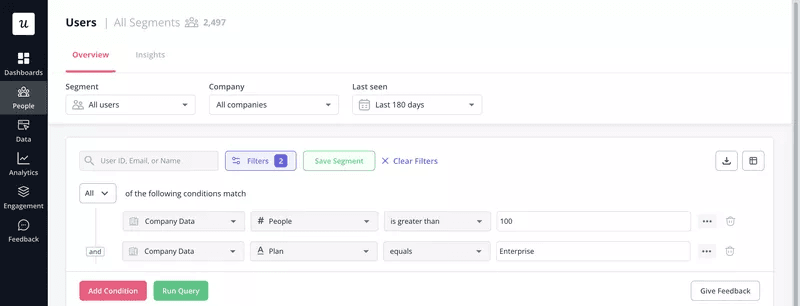
Value-based customer segmentation model in Userpilot.
What is customer segmentation analytics?
Customer segmentation analytics involves using analytics tools to collect, analyze, and interpret customer data. The purpose is to identify patterns and segment your customers.
The analysis doesn’t stop there.
Once you have the segments, you carry out an even more in-depth investigation to gain more granular insights about each of the segments.
The benefits of customer segmentation analytics
The main benefit of customer segmentation analysis is that it helps you better understand customers’ needs. And satisfy them with personalized experiences.
Let me explain:
Your customer base isn’t homogenous.
For example, Userpilot caters to different user personas: product managers, marketers, customer success teams, and UX/UI designers. Each persona has different goals to achieve, so they use it differently.
This means their pain points may vary, too, and consequently, they need different support. Without segmenting them, we wouldn’t be able to offer them relevant guidance or resources.
Why does it matter?
Accommodating customer needs improves customer satisfaction. This often strengthens customer loyalty and improves retention. Satisfied customers also turn into product advocates and enhance your customer acquisition efforts.
When it comes to customer acquisition, knowing what makes your existing customers tick can help you refine your sales and marketing strategy, effectively engage your target audience, and attract the right customers.
All of which enables sustainable growth.
How to start implementing customer segmentation analytics?
Here’s the process we use at Userpilot to segment our customers.
Collect customer data
The first step is collecting qualitative and quantitative customer data.
Qualitative data could be customer feedback, information about customer jobs to be done, or their role in the organization.
To collect such data, use in-app surveys.
For example, a welcome survey triggered when the user first logs in can help you profile the new customer and personalize their experience, while satisfaction surveys help you segment customers experiencing specific problems.

To collect quantitative data, we use product analytics. This enables us to track product usage and user behavior in-app.
Until recently, this involved tagging features and creating events to track. However, with the new Autocapture feature, all user events are logged automatically to ensure you don’t miss any important data.
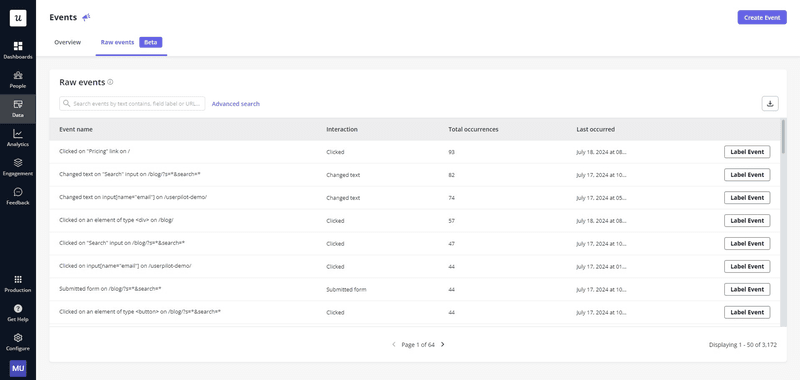
Organize the collected data into different customer segments
The next step is segmenting your customers based on the collected data.
Simple? I suppose so. As long as you keep your objectives in mind. There’s no point in segmenting users for its own sake.
For example, to personalize the onboarding experience, segment your customers based on their use cases or boost customer expansion through upsells based on the stage in the user journey.
Use segmentation based on your analytics strategies
Finally, it’s time to analyze the behavior of specific user segments to gather the necessary insights.
Let’s imagine you want to improve user activation during the free trial.
To do so, analyze the behavior of the users who reach the activation milestone quicker than others.
So first, create a segment based on their use case to ensure you’re comparing apples to apples. Then, break this down into further segments based on their time to value/activation.
Next, conduct a path analysis to understand what route the most successful users take. This could be the happy path that new users should emulate.
Examples of customer segmentation analytics from different industries
With the key principles covered, let’s look at examples of customer segmentation analysis in 4 different sectors.
Personalized marketing campaigns in retail
Retailers often rely on personalized marketing campaigns to serve relevant product recommendations. This increases customer engagement and loyalty and ultimately boosts sales.
To enable such personalization, they rely on two types of customer segmentation:
- Demographic segmentation (based on age, gender, and income level).
- Behavioral Segmentation (based on purchase history, frequency of visits, and average spending).
Grouping users based on these factors enables them to offer product recommendations that match their interests, preferences, and purchasing power. It’s also vital for the marketing campaign timing.
To be able to segment users based on these qualities, retail companies use cluster analysis and RFM analysis. The former group’s customers are based on their buying behavior, while the latter is based on the recency, frequency, and monetary value of the purchases.
Optimized customer experience in e-commerce
E-commerce platforms frequently employ customer segmentation to enhance the online shopping experience. This approach leads to improved customer satisfaction, higher retention rates, and increased order values.
To achieve these goals, online marketplaces typically focus on two key segmentation strategies:
- Geographic segmentation (based on customer locations and regional preferences).
- Psychographic segmentation (based on customers’ lifestyles and interests).
By leveraging these segmentation methods, e-commerce companies can tailor their website experience, product offerings, and marketing messages to align with specific customer groups’ wants and needs.
To effectively implement these segmentation strategies, online marketplaces use analytical tools, including:
- Predictive analytics to forecast future buying trends based on past behavior.
- Sentiment analysis to monitor and interpret customer reviews and feedback.
These tools enable e-commerce platforms to anticipate customer needs, respond proactively to market trends, and continuously refine their customer experience.
Enhancing customer retention in financial services
Banks leverage customer segmentation to enhance retention rates and improve overall service quality. This allows them to tailor their offerings and communication strategies, resulting in reduced churn and increased cross-selling opportunities.
To achieve these objectives, banks typically employ two primary segmentation strategies:
- Behavioral segmentation (based on account usage, transaction types, and service preferences).
- Demographic segmentation (considering age, occupation, and financial goals).
By combining these segmentation methods, banks can gain a comprehensive understanding of their customers’ financial behaviors, needs, and life stages. This insight enables them to develop more personalized financial products and services that resonate with specific customer groups.
To effectively implement these segmentation strategies, financial institutions lean into analytical tools like:
- Cluster analysis to identify distinct customer segments with similar financial habits.
- Predictive analytics to forecast potential churn and pinpoint at-risk customers.
These analytical approaches allow banks to proactively address customer needs and develop targeted retention strategies.
Targeted promotions in telecommunications
Telecom providers often use customer segmentation strategies to deliver more personalized experiences and targeted promotions, which increases average revenue and reduces churn rates.
To achieve these goals, telecom companies typically focus on two key segmentation methods:
- Demographic segmentation (focusing on age groups and income levels).
- Behavioral segmentation (monitoring data usage patterns and service preferences).
By combining these segmentation approaches, telecom providers can gain valuable insights into their customers’ needs, preferences, and potential value to the company. To tailor their service offerings and communication strategies more effectively.
To implement these segmentation strategies and extract actionable insights, telecom providers employ analytical tools like:
- RFM analysis to categorize customers based on their recent activities, frequency of service usage, and revenue contribution.
- Machine learning models to identify potential upgrades and promotional offers suited for each customer segment.
These enable telecom companies to predict customer behavior, identify high-value customers, and develop more targeted marketing campaigns.
Top tools for performing customer segmentation analysis
Let’s wrap up with an overview of 4 market-leading customer segmentation software applications, focusing on their segmentation, feedback, and analytics features.
Userpilot
Userpilot is a product growth platform with advanced segmentation, analytics, and feedback capabilities. It also has an engagement layer, which means you can act on the insights derived during the customer segmentation process.
When it comes to segmentation, you can group your customers based on:
- Company data.
- User attributes, like name, ID, plan, or web sessions.
- Tagged features they have engaged with.
- Completed custom events.
- In-app experiences they’ve engaged with, like checklists.
- User feedback – both quantitative, e.g., NPS scores, and qualitative, e.g., NPS responses.
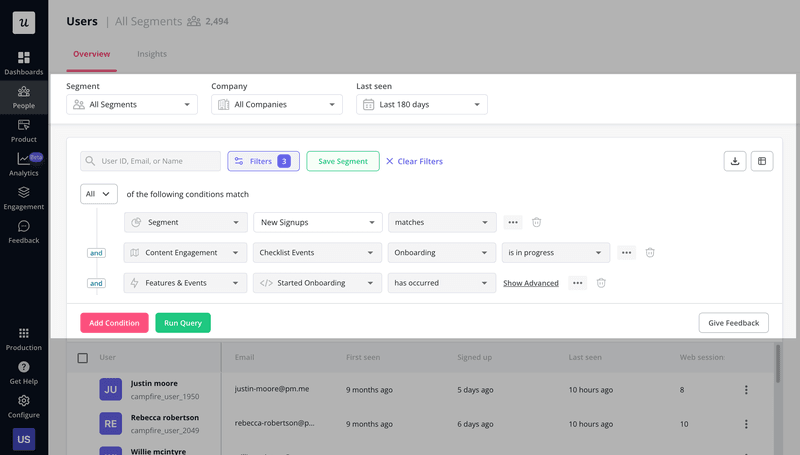
Talking about feedback, you can collect it via in-app surveys. Creating these is a walk in the park: just pick a template, customize it, set the audience settings, and choose how to trigger it (event-based or specific day/time).

As far as analytics go, you can analyze user behavior and product usage data via multiple reports, including Trends, Funnels, Paths, and Retention.
As mentioned, there’s no need for event tagging thanks to the new Autocapture feature.
Pendo
Pendo is another digital adoption platform in the round-up. Historically, the product has been known for its outstanding analytics, and this included segmentation features.
While Userpilot has caught up when it comes to the majority of the features, Pendo still has one advantage: it supports mobile devices.
Regarding segmentation, Pendo allows you to group your customers based on:
- Product usage.
- Visitor data.
- Account data.
- Mobile data
You can then analyze the segments in more detail in industry-standard reports like Trends, Funnels, Paths, and Retention. There are also Session Replays and Retroactive analytics (like Autocapture).
Just like Userpilot, Pendo allows you to collect customer feedback and use the data for segmentation.

Mixpanel
Mixpanel is a standalone product analytics platform. This means it offers top-notch analytics capabilities but to collect customer feedback and act on the insights, you need to integrate it with 3rd party tools.
What analytics features does Mixpanel support that Userpilot or Pendo don’t?
It enables you to track user behavior not just inside the product but also at different stages of the customer journey. For example, it offers cart analysis and campaign reporting.
This means you can segment based on more data types and use them to optimize your marketing campaigns and e-commerce sites. And tools like multi-touch attribution or root cause analysis allow you to extract more granular insights.

Amplitude
Amplitude is an even more powerful analytics than Mixpanel but this comes at the cost of user-friendliness. As more complex product, it isn’t as intuitive to set up and use as its competitor.
What sets it apart from Mixpanel?
Its session replays are available to users on all plans, and it supports feature flags. The latter, combined with customer segmentation, enables you to customize the user experience and conduct experiments by switching features on and off.

Conclusion
Customer segmentation analytics enable teams to gain a deeper understanding of customer needs, wants, and pain points.
Armed with such insights, they can tailor the customer experience to better satisfy their needs, target users with personalized marketing messaging reflecting their expectations, and guide product development to deliver maximum customer value.
If you’d like to learn how Userpilot can help you execute your customer segmentation strategy, book the demo!





